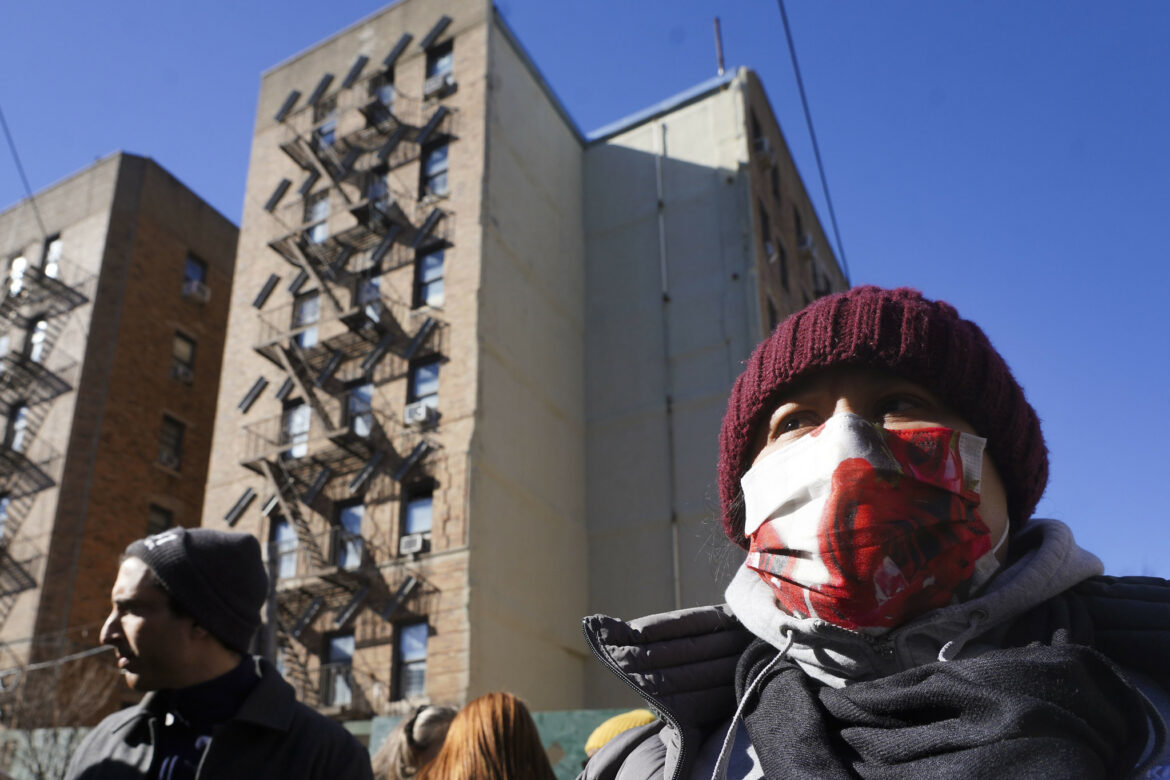“It will happen again. It’s not a matter of if, but when. The average building age in New York City is around 90 years, and we’re grappling with a shortage of building inspectors as well as an ongoing housing crisis—giving building owners little to no incentive to address violations.”

Gerardo Romo / NYC Council Media Unit
Tenants and lawmakers demanding repairs outside the collapsed Bronx building on Feb. 5.The recent building collapse at 1915 Billingsley Terrace was shocking, but predictable, and it shines a harsh light on the struggles faced by tenants in New York.
More than two dozen of the building’s tenants are rightly taking legal action against their landlord for neglect and harassment that goes far beyond the collapse itself.
The lawsuit shines a light on a laundry list of problems. The Department of Housing Preservation and Development issued at least 133 violations at the building since 2019 including broken windows, crumbling ceilings, leaking pipes, and illegal partitioning of units. In the past three months alone, the city issued penalties for 58 “immediately hazardous” conditions, including rat and roach infestations, broken locks, and faulty self-closing doors meant to stop the spread of fires.
While the level of negligence may vary in future building collapses, it will happen again. It’s not a matter of if, but when. The average building age in New York City is around 90 years, and we’re grappling with a shortage of building inspectors as well as an ongoing housing crisis—giving building owners little to no incentive to address violations.
As someone deeply rooted in the city and a lawyer who represents plaintiffs in these types of matters, I’d like to talk about tenant rights and give some real-world advice for anyone looking for a new place to live.
First know this: property owners have a legal responsibility to keep their buildings safe for everyone inside, whether you’re a tenant, visitor, worker, or just passing through.
Second, you have the right to seek legal compensation if something goes wrong. Liable parties can include the building owners, management company, general contractor, subcontractors, structural engineers, project architects, and/or material suppliers.
Third, you have the right to seek recovery for your injuries and associated pain and suffering, medical expenses, lost wages, property damage, and any other related costs. If you were a construction worker injured in a building collapse on a job site, you may also be eligible for workers’ compensation benefits, in addition to the above.
But it’s not just about reacting after the fact. Renters, in particular, need to know how to spot potential problems before they sign a lease. Checking for unresolved violations in a building’s history is a smart move. These violations are public record, and they can tell you a lot about a building’s safety.
Anyone can easily access this information through the NYC Housing Preservation & Development website and the Building Information System (BIS) tool, which provides access to past and current complaints, violations, work orders, housing court lawsuits, and more, allowing tenants to make informed decisions about their living spaces.
Outside of the five boroughs, residents and residence seekers can contact the municipality’s building department or submit a Freedom of Information Law (FOIL) request to access vital information about a building’s safety track record.
Our state empowers us with access to information as well as the right to pursue it.
Though it’s an added expense, hiring your own independent building inspector prior to signing a lease is also an option.
The collapse in December was a wake-up call for all of us. Dozens of people were displaced, and it’s a reminder that things need to change. Unfortunately, building owners and landlords won’t always do the right thing, so it’s up to lawsuits like the one recently filed in the 1915 Billingsley Terrace collapse to not only hold them accountable, but also begin to deter negligence.
David B. Lever is a member of Lever & Ecker, PLLC, a boutique plaintiff’s personal injury firm in New York.








